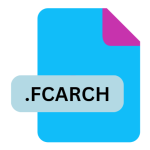.AXV File Extension

Annodex Video File
| Developer | CSIRO |
| Popularity | |
| Category | Video Files |
| Format | .AXV |
| Cross Platform | Update Soon |
What is an AXV file?
The .AXV file extension refers to Annodex Video files, a format that was designed to make digital media more accessible and interactive.
Annodex is an advanced open-source technology that provides a standardized way of embedding metadata directly into the video stream, allowing for efficient searching, navigation, and organization of multimedia content.
The .AXV file format is part of the Annodex framework, which combines multimedia with the capability to annotate, index, and search within the content.
More Information.
The Annodex technology emerged in the early 2000s, during a period when the demand for interactive and accessible multimedia content was rapidly growing.
The internet was increasingly being used as a platform for video streaming and sharing, but the ability to search within video content was still in its infancy.
Annodex was conceived as a solution to this problem, offering a way to tag and index video content with metadata, allowing users to jump to specific sections of a video or search for content within a video.
The initial purpose of the .AXV file format was to enable the creation of rich, interactive video experiences.
By embedding metadata directly into the video stream, Annodex allowed for the creation of hyperlinked video content that could be easily navigated and searched.
This was particularly useful for educational and documentary content, where viewers might want to jump to specific topics or sections within a longer video.
Origin Of This File.
The .AXV file format was developed by the Annodex Foundation, an organization dedicated to promoting and supporting open standards in digital multimedia.
The format was built on top of the Ogg container format, which is widely used for streaming and storing multimedia.
Annodex aimed to extend the functionality of Ogg by integrating time-continuous metadata, making it easier to create and manipulate hyperlinked video content.
The idea was to provide a way to make video content as searchable and interactive as text documents on the web.
File Structure Technical Specification.
The .AXV file format is based on the Ogg container format, which is a bitstream container designed to efficiently stream and manipulate multimedia.
The Ogg format is known for its flexibility and support for a wide range of codecs, making it an ideal foundation for Annodex.
The key innovation of the .AXV format is the integration of Annodex metadata, which is embedded directly into the video stream.
This metadata is stored in a format called Continuous Media Markup Language (CMML), which is an XML-based language designed specifically for time-continuous media.
CMML allows creators to tag specific time segments within a video with descriptive metadata, hyperlinks, and other annotations.
The technical specifications of the .AXV format include:
- Container Format: Ogg
- Video Codec: Typically Theora, an open-source video codec known for its efficiency and quality.
- Audio Codec: Often Vorbis, an open-source audio codec that is highly compressed and lossy.
- Metadata Format: Continuous Media Markup Language (CMML)
- File Extension: .AXV
How to Convert the File?
Converting .AXV files to other formats may be necessary if you need to use the video in applications that do not support the format.
There are several tools available for converting .AXV files, although the process may require additional steps due to the embedded metadata.
1. Using VLC Media Player: VLC is a versatile media player that supports a wide range of formats, including Ogg-based formats like .AXV. To convert an .AXV file using VLC:
- Open VLC and go to
Media > Convert/Save. - Click
Addto select your .AXV file. - Click
Convert/Saveand choose the desired output format (e.g., MP4, AVI). - Set the destination file and click
Startto begin the conversion.
2. Using FFmpeg: FFmpeg is a powerful command-line tool that can convert almost any multimedia file. To convert an .AXV file using FFmpeg:
- Open a command prompt or terminal window.
- Use the command
ffmpeg -i input.axv -c:v libx264 output.mp4to convert the file to MP4 format. - Replace
output.mp4with your desired output file name and format.
Advantages And Disadvantages.
Advantages:
- Interactivity: The .AXV format’s ability to embed metadata directly into the video stream allows for the creation of hyperlinked video content. This makes videos more interactive and engaging, as viewers can easily navigate to specific sections or search for particular content within a video.
- Searchability: With Annodex metadata, .AXV files can be indexed and searched just like text documents. This is particularly useful for educational and documentary content, where users might want to find specific information within a longer video.
- Open Source: The .AXV format is based on open-source technology, which means it is free to use and can be implemented in a wide range of applications without licensing fees.
- Compatibility: As the .AXV format is built on the Ogg container, it is compatible with a wide range of media players and software that support Ogg.
Disadvantages:
- Limited Adoption: Despite its innovative features, the .AXV format has not seen widespread adoption. This means that there are relatively few tools and applications that support the format, making it less convenient for users.
- Learning Curve: The use of CMML for metadata may require a learning curve for content creators who are not familiar with XML or similar markup languages.
- Performance: Embedding large amounts of metadata directly into the video stream can potentially impact the performance of playback, particularly on lower-end devices.
How to Open AXV?
Open In Windows
- VLC Media Player: VLC supports the Ogg container and can play .AXV files directly. Simply open VLC, go to
Media > Open File, and select your .AXV file. - MPlayer: Another open-source media player that supports .AXV files. Install MPlayer and open the file through the player interface.
Open In Linux
- VLC Media Player: VLC is a popular choice on Linux as well, and it can play .AXV files seamlessly.
- Totem: The default video player for many Linux distributions (also known as GNOME Videos), Totem supports Ogg-based formats and can open .AXV files.
Open In MAC
- VLC Media Player: VLC is available for macOS and can open .AXV files without any additional configuration.
- Elmedia Player: This media player also supports .AXV files and provides a user-friendly interface.












